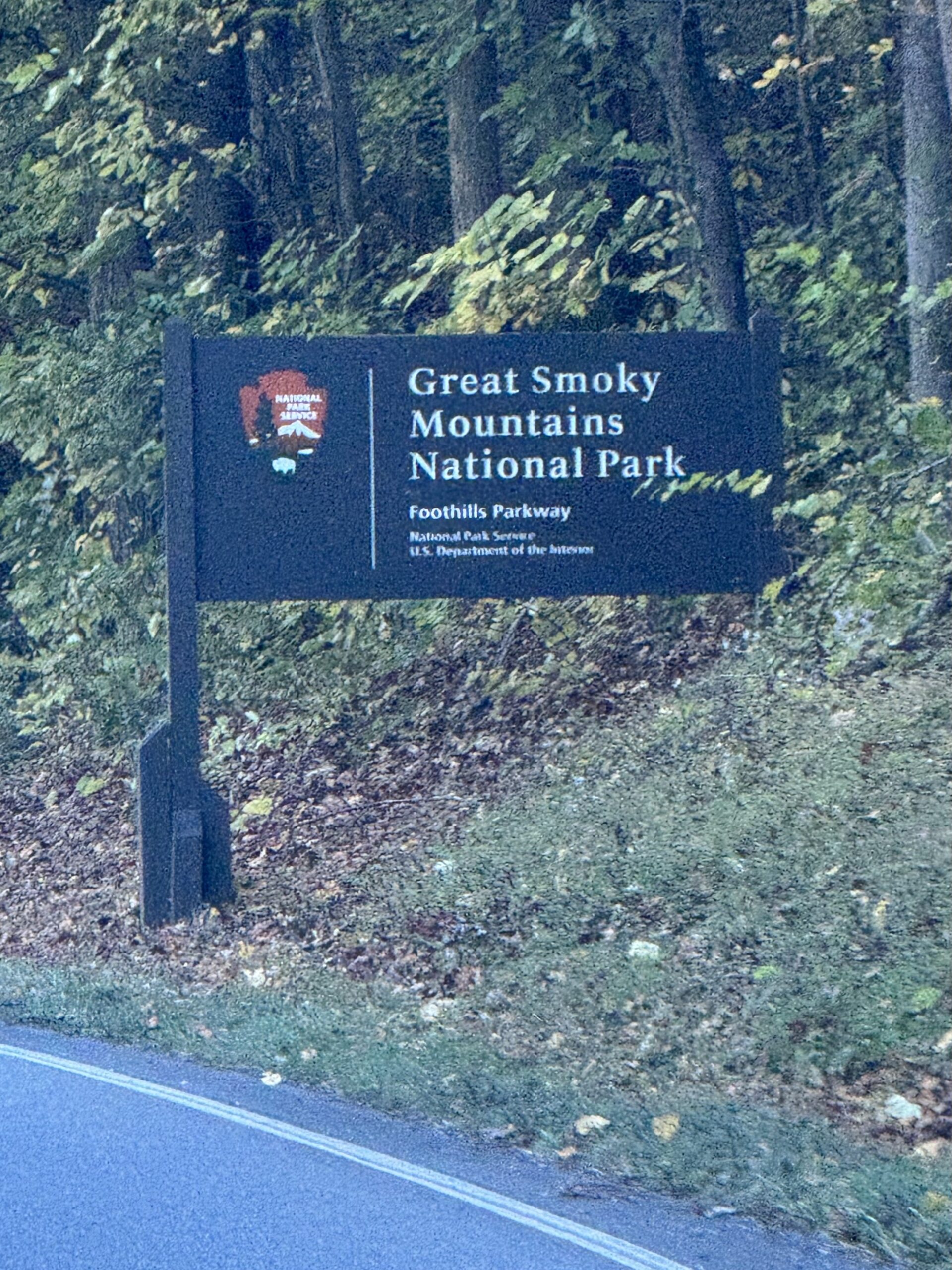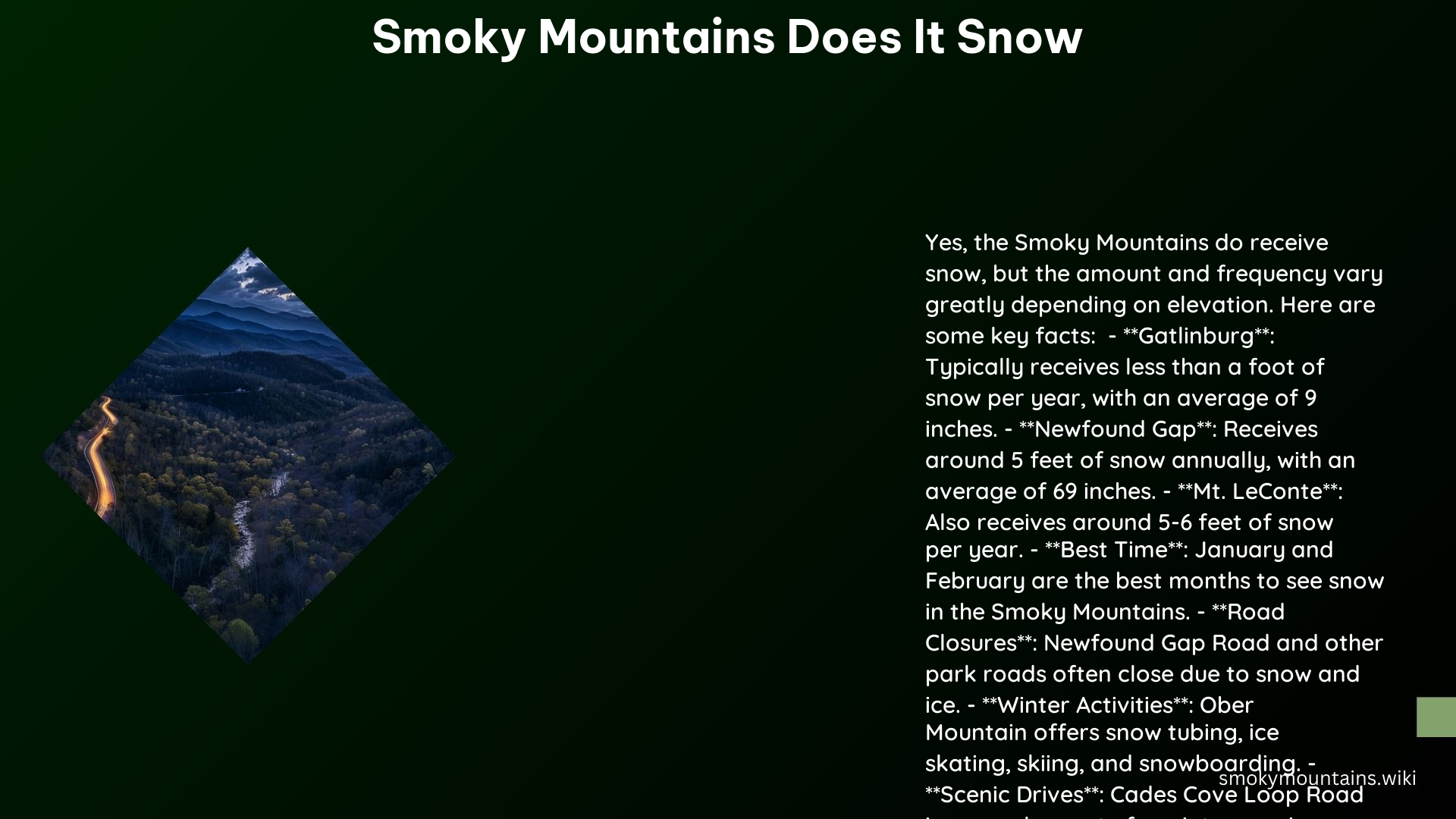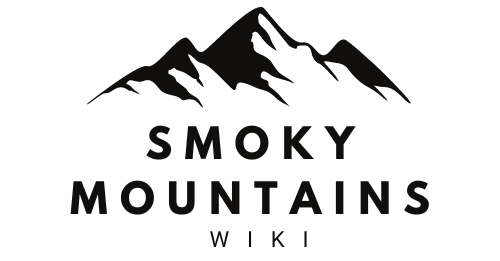Yes, the Smoky Mountains do receive snow, although the amount and frequency vary depending on elevation and location. As a touring enthusiast, it’s essential to understand the snow patterns in the Smoky Mountains to plan your trip effectively.
Average Snowfall

The Smoky Mountains experience a range of snowfall, with higher elevations receiving significantly more than the lower areas. Here’s a breakdown of the average snowfall in some key locations:
| Location | Average Snowfall |
|---|---|
| Newfound Gap | 69 inches (5.75 feet) |
| Gatlinburg | Less than 1 foot (9 inches) |
| Mount LeConte | 5-6 feet |
As you can see, the higher elevations, such as Newfound Gap and Mount LeConte, receive significantly more snow than the lower-lying areas like Gatlinburg. This is an important consideration when planning your winter activities in the Smoky Mountains.
Best Places to See Snow

If you’re hoping to experience the beauty of snow in the Smoky Mountains, there are several locations that offer excellent opportunities:
-
Winter Hiking Trails: Trails like Rainbow Falls provide a chance to see snow-covered landscapes and icicles, creating a breathtaking winter wonderland.
-
Ober Mountain: This popular destination offers a variety of snow-based activities, including snow tubing, ice skating, skiing, and snowboarding. They also host special events throughout the winter season.
-
Cades Cove: Take a scenic drive through the 11-mile loop road to witness the snow-covered landscapes and enjoy the peaceful, serene atmosphere.
-
Downtown Gatlinburg: While snowfall is less frequent in the lower elevations, the charming town of Gatlinburg can sometimes experience a dusting of snow, creating a magical and picturesque setting.
Winter Weather Facts
The Smoky Mountains are known for their harsh winter conditions, and it’s essential to be prepared for the challenges they can present. Here are some key facts about the winter weather in the Smoky Mountains:
- Coldest Recorded Temperature: -32°F near the summit of Mt. LeConte on January 13, 1986.
- Strong Wind Gusts: The Smoky Mountains can experience hurricane-force winds up to 70mph, which can significantly impact outdoor activities and travel.
- Snow Season: Snow can fall anytime from October to April, with January and February being the most likely months for significant snowfall.
Planning Your Trip
When planning a winter trip to the Smoky Mountains, it’s crucial to be well-prepared and stay informed about the weather conditions. Here are some tips to help you make the most of your visit:
-
Check Weather Forecasts: Monitor the weather forecasts before and during your trip to ensure you’re aware of any impending snow events or cold fronts.
-
Pack Essentials: Bring warm clothing, hand and foot warmers, and other winter supplies to ensure a comfortable and safe trip.
-
Business Hours: Check with local businesses for their hours during snow events, as they may adjust their schedules to accommodate the weather conditions.
By understanding the snow patterns, best viewing locations, and winter weather facts, you can plan a memorable and enjoyable trip to the Smoky Mountains during the winter season.
References
- https://parkgrillgatlinburg.com/blog/places-see-snow-smoky-mountains/
- https://www.tripadvisor.com/ShowTopic-g143031-i2563-k8931716-Snow_in_smoky_mountains-Great_Smoky_Mountains_National_Park_Tennessee.html
- https://www.cabinsusagatlinburg.com/smoky-mountains-blog/post/40/smokies-winter-weather-facts.php
- https://www.nps.gov/grsm/planyourvisit/snow.htm
- https://patriotgetaways.com/blog/snow-smoky-mountains/
